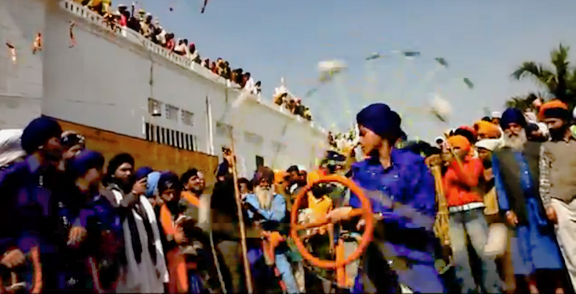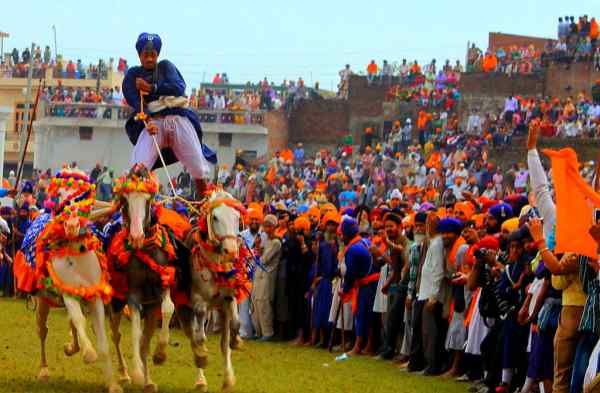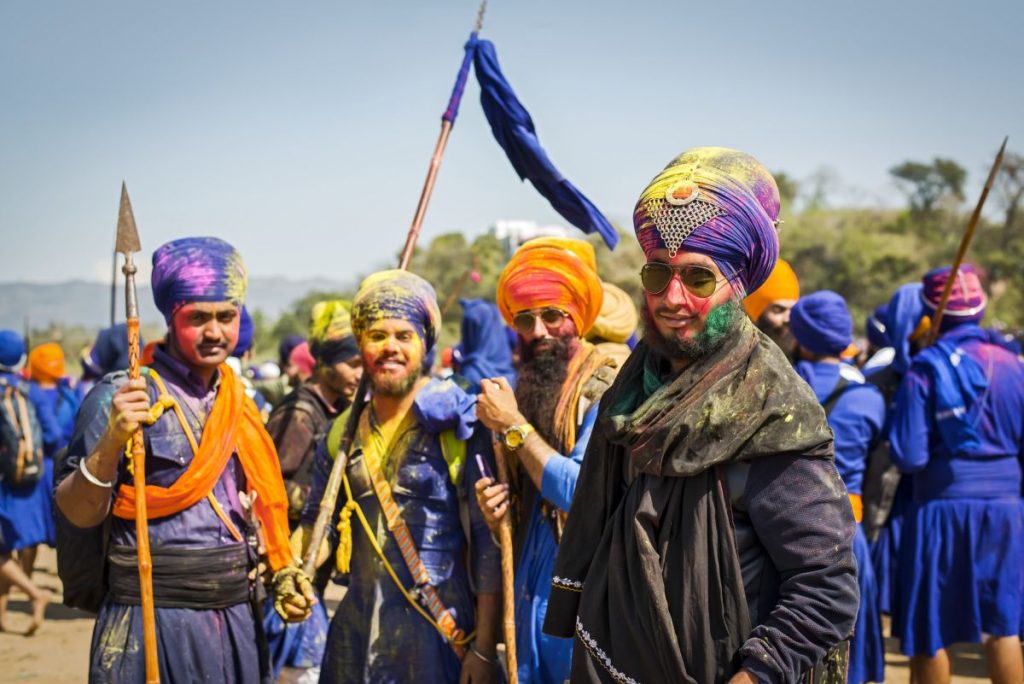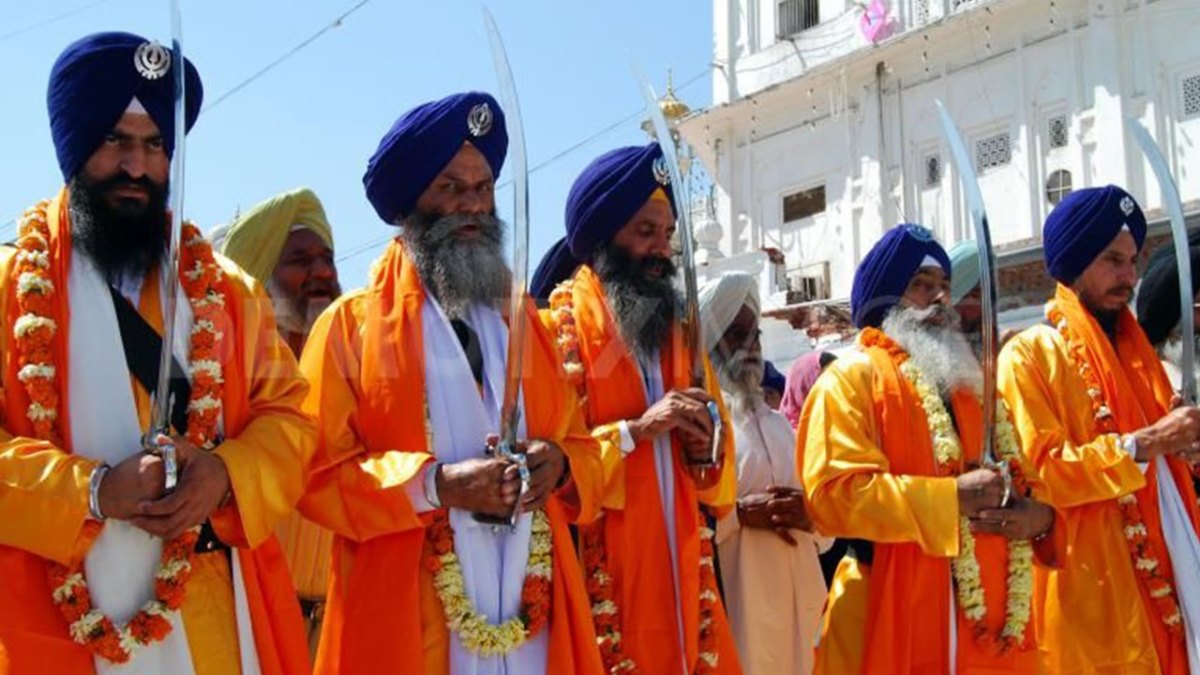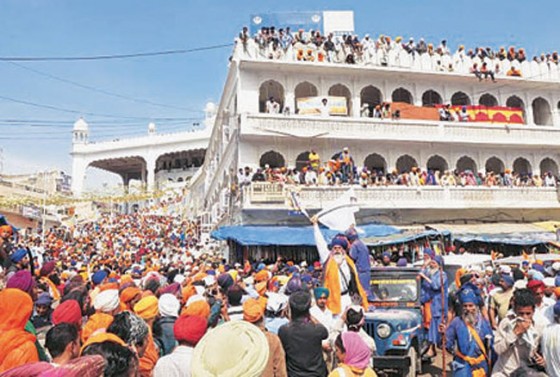A Sikh festival that celebrates the martial spirit and bravery of the Khalsa, the community of initiated Sikhs, Halla Mohalla was started by the tenth Sikh Guru, Guru Gobind Singh, in the 17th century, as a way of training his soldiers and showcasing their skills. The festival is held every year in Anandpur Sahib, Punjab, where the Khalsa was founded. It coincides with the Hindu festival of Holi but has a distinct identity and meaning.
The Halla Mohalla festival traces its origins to the 17th century, during the time of Guru Gobind Singh, the tenth Sikh Guru. In response to prevailing social and political challenges, Guru Gobind Singh envisioned the festival as a platform to foster unity, resilience, and martial spirit among his followers. The term “Halla Mohalla” translates to “mock fight” or “mock battle,” reflecting the festival’s emphasis on martial arts, military exercises, and mock battles as a means of promoting physical fitness, discipline, and preparedness among Sikhs.
The main attractions of Halla Mohalla are the mock battles, the display of weapons, horseback riding, and the martial arts. The participants, called Nihangs, wear traditional blue robes and turbans and carry swords, daggers, spears, and rifles. They perform feats of agility, strength, and courage, such as breaking bricks with their hands, riding two horses at once, or throwing a spear from a moving horse. They also recite poems and hymns in praise of the Guru and the Khalsa.
Central to the Halla Mohalla festival are the awe-inspiring displays of Sikh martial arts, or Gatka, showcasing the agility, strength, and precision of Sikh warriors as they engage in mock battles and intricate swordplay. The festival kicks off with grand processions and parades, featuring Nihang Sikhs adorned in colourful attire, elaborate turbans, and ceremonial weapons, symbolizing the valour and chivalry of the Sikh warrior tradition.
Halla Mohalla takes place immediately after Holi, the Hindu festival of colours, often coinciding with or following the day after. Unlike Holi’s playful colour-throwing, Halla Mohalla focuses on martial displays, reflecting the Sikh tradition of being warriors and readiness for defence. It celebrates the formation of the Khalsa, a community of committed Sikhs, upholding principles like equality, service, and justice.
Amidst the festivities, Halla Mohalla also offers devotees an opportunity for spiritual reflection and enlightenment, with religious discourses, prayers, and kirtan or devotional music sessions held at gurdwaras, the Sikh temples throughout Anandpur Sahib. They also take part in the langar, the communal kitchen, where free food is served to everyone, regardless of caste, creed, or religion. The festival promotes the values of equality, service, and brotherhood among the Sikhs and society.
Anandpur Sahib, the birthplace of the Khalsa, serves as the epicentre of Halla Mohalla festivities, with pilgrims and devotees flocking to the sacred city to pay homage to Sikh tradition and heritage. At the heart of Halla Mohalla lies the sprawling Akhara complex, where Sikhs gather to engage in martial arts training, physical exercises, and spiritual rituals under the guidance of seasoned Nihang warriors. The festival is also marked by acts of seva, or selfless service and community feasts, where devotees come together to prepare and share the langar, or free communal meals, as a symbol of equality, unity, and solidarity.
Nihangs, also known as Akalis, are an esteemed order of Sikh warriors with a rich history dating back to the early days of Sikh military history. Nihangs are part of an armed warrior order within Sikhism, known for their distinctive blue attire and proficiency in martial arts. They played a crucial role in the military history of the Sikhs, often celebrated for their victories despite being outnumbered. Nihangs embody the spirit of fearlessness, commitment to justice, and readiness for martyrdom as taught by the Sikh Gurus. They are seen as the protectors of Sikh gurdwaras and the upholders of the faith, especially during times of conflict. Today, Nihangs also have a ceremonial role, representing the martial heritage and the spiritual ethos of the Sikh community. Nihangs hold a special place in Sikhism, symbolizing the courage, resilience, and unwavering dedication to the principles laid down by the Sikh Gurus. They are a reminder of the Sikh tradition of saint soldiers, committed to both spiritual and temporal duties.
For Sikhs around the world, Halla Mohalla serves as a time to reaffirm their commitment to the core principles of Sikhism: equality, justice, compassion, and service to humanity. The festival inspires future generations of Sikhs to embrace their heritage, uphold their traditions, and embody the spirit of courage, resilience, and compassion that defines the Sikh faith.
In an era of rapid change and globalisation, Halla Mohalla serves as a symbol of cultural resilience, preserving the rich heritage and identity of the Sikh community for generations to come. The festival also promotes interfaith understanding and dialogue, inviting people of all backgrounds to partake in the festivities and experience the richness and diversity of Sikh culture and tradition.
In the kaleidoscope of festivals that adorn India’s cultural landscape, Halla Mohalla shines as a beacon of Sikh valour, spirituality, and tradition. As pilgrims and devotees converge upon Anandpur Sahib to partake in the festivities, they are reminded of the timeless values of courage, compassion, and community that lie at the heart of the Sikh faith.
In a world marked by division and discord, Halla Mohalla stands as a testament to the power of unity, solidarity, and shared humanity. As we celebrate this cherished festival, let us embrace its message of peace, tolerance, and brotherhood, and strive to build a world where diversity is celebrated, differences are respected, and all people are treated with dignity and respect.

